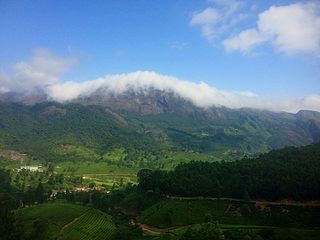
The Western Ghats or the Sahyadri Mountain range is a mountain range that covers an area of 160,000 km2 (62,000 sq mi) in a stretch of 1,600 km (990 mi) parallel to the western coast of the Indian peninsula, traversing the states of Gujarat, Maharashtra, Goa, Karnataka, Kerala and Tamil Nadu. It is a UNESCO World Heritage Site and is one of the eight biodiversity hotspots in the world. It is sometimes called the Great Escarpment of India. It contains a very large proportion of the country's flora and fauna, many of which are endemic to this region. According to UNESCO, the Western Ghats are older than the Himalayas. They influence Indian monsoon weather patterns by intercepting the rain-laden monsoon winds that sweep in from the south-west during late summer. The range runs north to south along the western edge of the Deccan Plateau and separates the plateau from a narrow coastal plain called Konkan along the Arabian Sea. A total of 39 areas in the Western Ghats, including national parks, wildlife sanctuaries and reserve forests, were designated as world heritage sites in 2012 – twenty in Kerala, ten in Karnataka, six in Tamil Nadu and four in Maharashtra.

The purple frog, Indian purple frog, or pignose frog is a frog species of the genus Nasikabatrachus. It is endemic to the Western Ghats in India. Although the adult frog was formally described in October 2003, the juvenile form of the species was described earlier in 1917.

Fejervarya is a genera of frogs in the family Dicroglossidae found in Asia. First proposed in 1915 by István József Bolkay, a Hungarian naturalist, the genus did not see widespread adoption at first. As late as the 1990s it was generally included in Rana, but more recent studies have confirmed its distinctness.

Sphaerotheca is a genus of true frogs. They can be found in South Asia. Molecular data suggest that they are closely related to Fejervarya, perhaps as a monophyletic group within a paraphyletic Fejervarya.
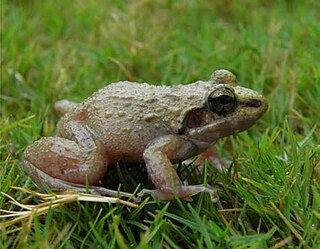
Indirana leithii is a species of frog in the family Ranixalidae. It is endemic to the northern Western Ghats of India. As currently defined, its range is restricted to the states of Maharashtra and southern Gujarat; earlier records elsewhere refer to other species.
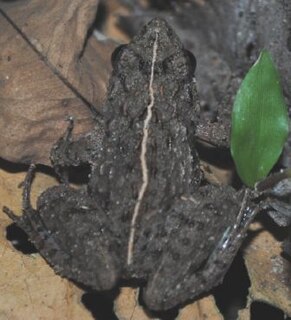
Zakerana nepalensis is a small-sized frog native to northern and northeastern India, Bangladesh, and Nepal. It has recently been reported also from Bhutan. Having distinct and narrow middorsal line (MDL); indistinct skin fringe on outer side of 5th toe; relative finger length (RFL) is 2<1<4<3, 1st finger scarcely longer than 2nd; laterally dark and medially pale throat in males; body tubercles oblong, arranged in longitudinal folds; and snout jutting over jaw.
Zakerana syhadrensis, is a frog species of the family Dicroglossidae and native to India, Sri Lanka, Pakistan, Nepal and Bangladesh. Zakerana syhadrensis from the Western Ghats in southern India and from Sri Lanka probably belong to one or two unnamed species. It is the type species of genus Zakerana. In view of its wide distribution and stable population trend, IUCN assessors listed it as Least Concern in 2009 and 2016.
Fejervarya multistriata is a species of frog in the family Dicroglossidae. It is found in southern China and in Taiwan, but its range likely extends to Vietnam, Laos, Thailand, and Myanmar.
Djoko Tjahjono Iskandar is an Indonesian herpetologist who studies the amphibians of Southeast Asia and Australasia. He is a professor of biosystematics and ecology at Bandung Institute of Technology in West Java, Indonesia.
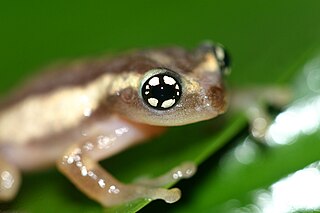
Raorchestes ochlandrae is a species of shrub frog in the family Rhacophoridae. It is endemic to the Western Ghats, India. This species of the oriental shrub frog was first described from Kakkayam Reserve Forest of Calicut district, Kerala state, in the southern Western Ghats in 2007 but has since been recorded at many other sites along the Western Ghats. The specific name ochlandrae refers to microhabitat of the species, bamboo Ochlandra setigera.
Zakerana asmati is a species of frogs found in the Chittagong and Dhaka, Bangladesh. Its type locality is on the University of Chittagong campus. It was described by Mohammad Sajid Ali Howlader in 2011.

Minervarya is a genus of frogs in the family Dicroglossidae from south Asia, and Nepal and Bhutan. They are sometimes known as the Cricket frogs or Rice frogs.

Minervarya mudduraja is a species of frogs that is endemic to the Western Ghats, India. It is named after the 17th century ruler Muddu Raja who founded Madikeri.

Raorchestes is a genus of frogs in the subfamily Rhacophorinae that are found in mountainous regions of South Asia, Southeast Asia, and southern China. A recent study places Raorchestes as a sister taxon of Pseudophilautus. Before the description of the genus in 2010, species now in Raorchestes had been assigned to genera Ixalus, Philautus, and Pseudophilautus.

Zakerana kudremukhensis is a species of frogs in the family Dicroglossidae. It is endemic to the central Western Ghats of Karnataka state, India. The name kudremukhensis refers to the type locality, Kudremukh.
Fejervarya sakishimensis is a species of frogs in the family Dicroglossidae. It is endemic to Taiwan and the Ryukyu Islands of Japan. It belongs to the Fejervarya limnocharis species complex.

Fejervarya kawamurai is a species of frog in the family Dicroglossidae. It is endemic to Taiwan, Japan, and China. It belongs to the Fejervarya limnocharis species complex.
Minervarya modesta is a species of frog in the family Dicroglossidae. It is endemic to Karnataka, India, where it has been found in Jog, Shimoga District.
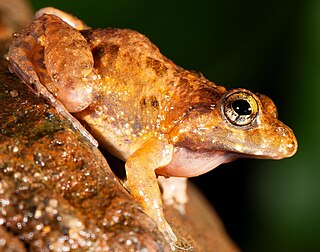
Minervarya pentali, or Pental's Minervaryan frog, is a species of frog in the fork-tongued frog family, Dicroglossidae. It is endemic to the Western Ghats in India.












